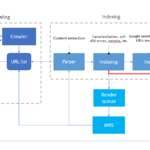Hormones and Women: The Unseen Game-Changers of Female Health & Fat Loss
By Priyanka Thakur, Fittr Coach
Hello Family!
How’s your energy this week? Feeling strong and balanced? If not, hormones might be silently steering the ship.
Let’s dive deep into the hormonal physiology that shapes every woman’s life—from teenage years to menopause—and what you can do to stay in control.
What Are Hormones and Why Should Women Care?
Hormones are like internal messengers that control your metabolism, periods, mood, skin, fat loss, energy, and fertility. For women, they change cyclically every month, and gradually over decades—which makes managing them both a science and an art.
The Core Female Hormones & Their Functions
1. Estrogen – The Feminine Force
- Produced by: Ovaries
- Role: Regulates menstrual cycle, maintains bone density, supports brain and heart function
- Imbalance Signs: Irregular periods, hot flashes, mood swings, weight gain around hips
2. Progesterone – The Peacekeeper
- Produced by: Corpus luteum post-ovulation
- Role: Prepares uterus for pregnancy, calms the nervous system
- Imbalance Signs: PMS, anxiety, sleep issues, spotting
3. Testosterone – The Strength Builder
- Produced by: Ovaries and adrenal glands
- Role: Muscle growth, libido, confidence, motivation
- Imbalance Signs: PCOS (acne, facial hair), low muscle tone
4. Insulin – The Sugar Gatekeeper
- Produced by: Pancreas
- Role: Moves glucose into cells, regulates fat storage
- Imbalance Signs: Insulin resistance, PCOS, belly fat
5. Cortisol – The Stress Responder
- Produced by: Adrenal glands
- Role: Manages stress, inflammation, metabolism
- Imbalance Signs: Fatigue, belly fat, cravings, anxiety
Hormonal Physiology: Understanding the Inner Orchestra
Key Axes in Female Hormonal Regulation
1. Hypothalamus–Pituitary–Ovarian (HPO) Axis
Controls:
- Menstrual cycle
- Estrogen & progesterone balance
- Ovulation
Disturbances from stress, overtraining, or low body fat can lead to:
- Irregular or missing periods (amenorrhea)
- Infertility
2. Hypothalamus–Pituitary–Adrenal (HPA) Axis
Regulates:
- Cortisol (stress hormone)
- Immune function and inflammation
Chronic stress leads to:
- High cortisol → fat storage
- Burnout and adrenal fatigue
3. Thyroid Axis
Regulates:
- Metabolism, energy, temperature
Issues like hypothyroidism are more common in women and can cause:
- Fatigue, weight gain, cold intolerance, depression
Female Hormones Through the Ages: A Decade-Wise Guide
Teen Years (13–19)
What’s Happening: Hormones are finding rhythm. Estrogen and progesterone fluctuate.
Common Issues: Acne, irregular cycles, mood swings
Tips:
- Encourage whole foods, protein, and healthy fats
- Light exercise builds positive body image
- Track cycle for awareness
20s & Early 30s
What’s Happening: Hormones stabilize. Peak fertility, peak physical potential.
Common Issues: PMS, mild PCOS, stress due to lifestyle
Tips:
- Build lean muscle with strength training
- Eat micronutrient-dense foods
- Prioritize sleep to balance cortisol
Mid 30s–Early 40s (Perimenopause Begins)
What’s Happening: Progesterone dips first. Estrogen becomes erratic.
Common Issues: Mood swings, heavy periods, PCOS flare-ups
Tips:
- Add flaxseeds, soy for phytoestrogens
- Magnesium and B6 ease PMS
- Mindful training + mobility = balance
Mid 40s–50s (Perimenopause to Menopause)
What’s Happening: Estrogen drops; fat moves to belly.
Common Issues: Weight gain, hot flashes, joint pain
Tips:
- Lift weights 3x/week
- Boost calcium, Vitamin D
- Yoga/meditation for cortisol control
50s & Beyond (Post-Menopause)
What’s Happening: Low estrogen & progesterone
Common Issues: Osteoporosis, metabolic slowdown
Tips:
- Strength training to prevent sarcopenia
- Adequate protein (1.2–1.5 g/kg/day)
- Balanced carb intake for insulin control
PCOS, Thyroid, and Hormonal Weight Gain: What You Need to Know
PCOS (Polycystic Ovary Syndrome)
- Driven by insulin resistance and androgen excess
- Symptoms: Irregular periods, acne, weight gain, facial hair
- Solution: Calorie control + resistance training + sleep + fiber
Hypothyroidism
- Slows metabolism due to low T3/T4
- Symptoms: Hair loss, fatigue, constipation, depression
- Solution: Medication + diet rich in iodine, selenium, zinc + activity
Lifestyle + Hormones: The Winning Combo
| Factor | Balance Hormones With… |
|---|---|
| Nutrition | Whole grains, protein, fiber, Omega-3s |
| Exercise | Strength training + walking + mobility |
| Sleep | 7–9 hours, darkness, bedtime routine |
| Stress | Journaling, deep breathing, nature breaks |
| Gut Health | Prebiotics, probiotics, fermented foods |
FAQs: Hormones, Fat Loss, and Women’s Health
Q1: Why do I gain weight around the belly after 40?
Estrogen drops and cortisol rises. Both shift fat storage to the abdomen. Strength training + stress reduction help reverse it.
Q2: Can I lose weight with PCOS or hypothyroid?
Absolutely. Focus on consistency, not perfection. Resistance training and food quality matter more than magic diets.
Q3: Does cardio help with hormonal balance?
Too much cardio = high cortisol. Combine cardio with resistance workouts and active recovery.
Q4: What supplements support hormones?
Magnesium, Vitamin D3, Zinc, Omega-3s. Always consult your healthcare provider.
Final Word from Coach Priyanka
Hormones aren’t your enemy. They’re your biofeedback system, helping you navigate life’s stages with wisdom and strength.
Whether you’re 20 or 50, it’s never too late to build muscle, eat better, and feel amazing.
Let’s make #fitat43 the new normal—strong, lean, balanced, and proud.









